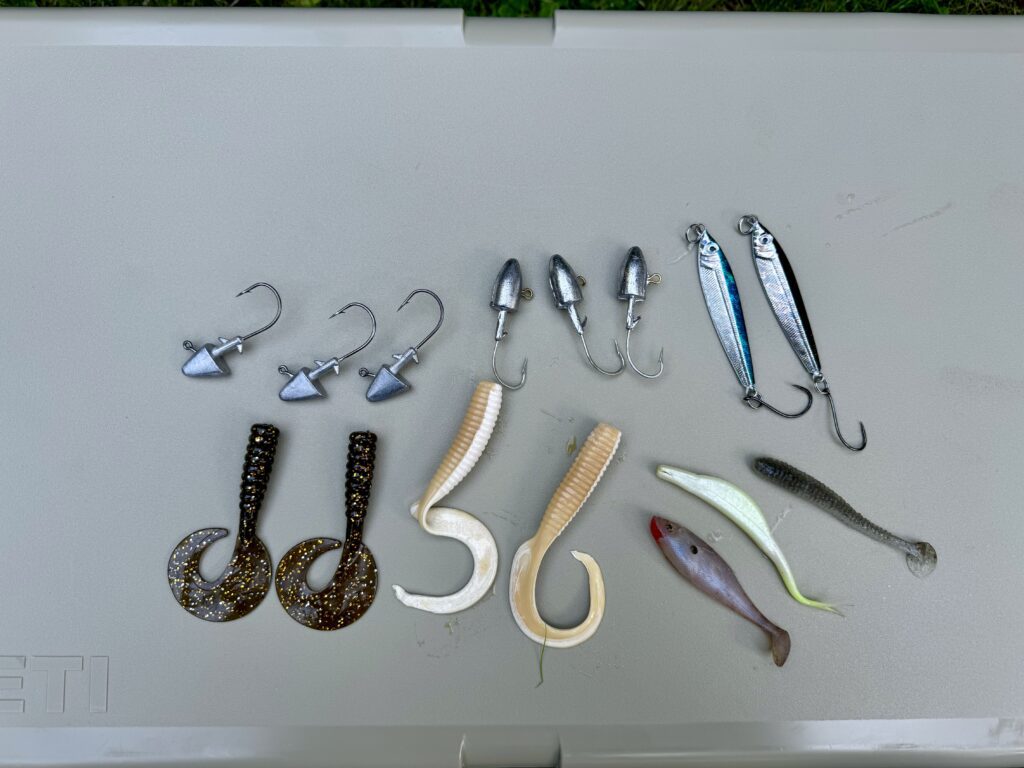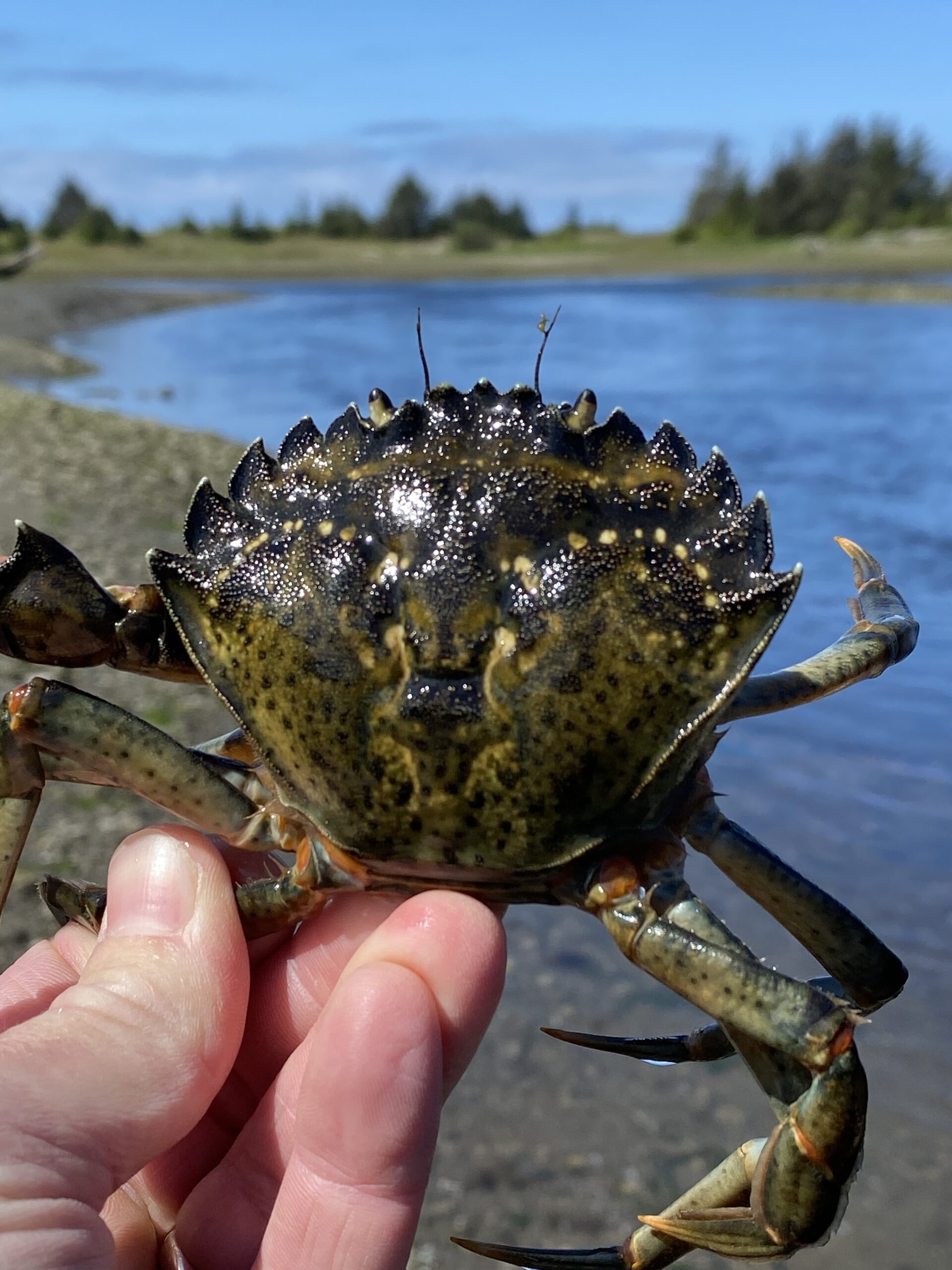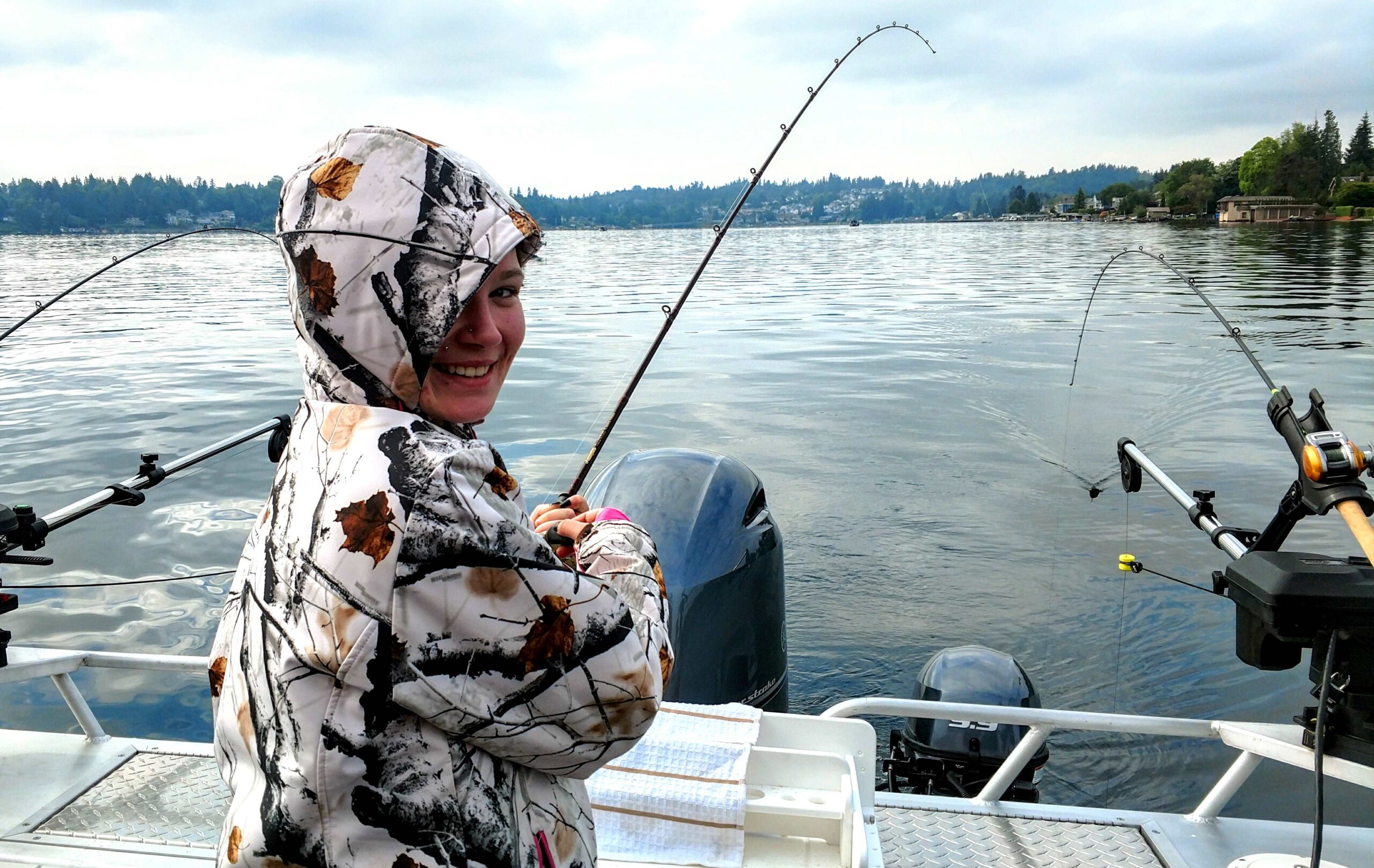Spanning from the Aleutian Island that make up the Alaskan archipelago, all the way down to the coastal waters of San Diego California, there is a small predatory fish that patrols the kelp beds and rocky structures that make up much of the US west coast. Unlike its close relative, the lingcod, this petite little predator enjoys a life that’s largely void of the constant bombardment from sports anglers. This small saltwater fish is the Kelp greenling. And though it’s not targeted by anglers the same way many other bottom fish along the West Coast are; due to its small size and lack of spiny armor, the kelp greenling is constantly being pursued and preyed upon by lingcod and even halibut.

Description and lifecycle.
Adult greenlings range from 10-21 inches and rarely grow to be more than 4.5 lbs. Both males and females tend to have colorful markings, with the females typically having a brown to orange body with black and grey spots, while the males typically have a dark grey body with blue spots around the head. The females can lay up to 12,000 eggs between November and January. This occurs three times throughout the spawning season and the deposited eggs will stick together in large clumps which the males will guard till the larvae stage. Kelp greenling can live up to 25 years of age.
Kelp Greenling as a fishery and as a food fish.
In general, Kelp Greenling are caught as by-catch by sport fisherman that are seeking lingcod, rockfish, and other popular bottom fish species. While some are retained for food, many anglers simply throw them back or utilize the fish as live bait for trophy-sized lingcod. Historically in Oregon and California, near-shore commercial vessels retained bycatch kelp greenling to sell in local fresh seafood markets, yet a thriving market never developed for this greenling, so commercial pressure has remained low.
Although Kelp greenling likely hasn’t been the star of the show on most people’s fishing trips, they do provide a good fishery for a number of reasons: They are commonly found in Washington’s nearshore waters and their numbers are thought to be healthy; for a small fish they put up a decent fight (remember, they are relatives to the lingcod); and finally, they are a delicious food- fish. I would put the flavor as something comparable to lingcod, yet the flesh, once cooked, is slightly less firm than these larger relatives.
Where to fish.
In Washington, the best areas to target greenling are on the straights of Juan de Fuca, and in coastal waters such as La Push and Makah Bay, though they can be caught to a lesser extent in the Puget Sound. Look for areas where healthy kelp beds meet rocky underwater structures and aim to fish at about 15-50 ft deep. A boat or a kayak will give you easy access to greenling habitat, but boats are not required for this fishery as you can fish for kelp greenling off of jetties or rock outcroppings.

How to catch them.
If you’ve fished for Cabezon, rockfish, or lingcod, you’ve likely already used gear that will entice a bite from kelp greenling. I prefer using a 1-2 oz laser minnow or a 1-2 oz lead jig head with a soft plastic grub. A variety of colors will work depending on what the fish are feeding on at the time. If fishing from a boat, dropping your lure to the bottom and vertically jigging will typically produce good results. While fishing from a jetty, you can cast, jig, and retrieve the same way you would work a buzz bomb from shore while targeting salmon.
Swim baits are also effective while fishing from a jetty or rock formations, and a weedless swim-bait setup will serve you well while trying to avoid hooking into the kelp. Since there’s a high likelihood of landing a larger fish like a lingcod or cabezon while targeting Kelp greenling, it’s a good idea to have a set-up that can handle larger fish. With that being said, you’ll still want to keep your gear light enough to make some fun out of bringing in the smaller kelp greenling. My go-to set-up is a 7 ft medium light action rod, with 25 lb braided as my main line, swivel, then 2-3 ft of 20 lb mono or fluorocarbon for my leader.
With fall in full swing and many people wrapping up their summer bottom fishing season, I find October to be a good time to utilize some of the cooler weather for late-season saltwater fishing. If you’d like to add some variety to your catch and want to take advantage of the slower boat launches, go ahead and give Kelp Greenling a try. Just keep an eye on those tides and weather forecasts!





















